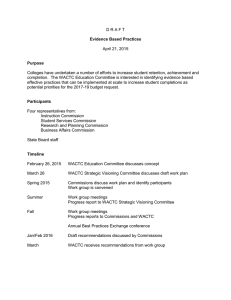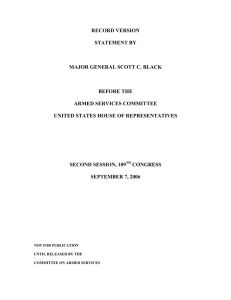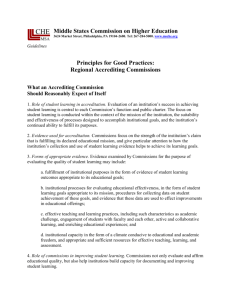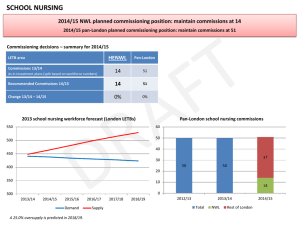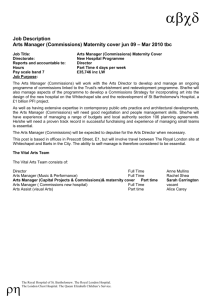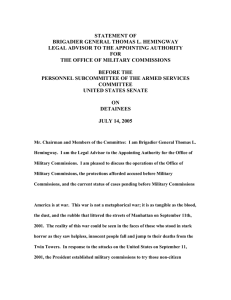First 5 and Developmental Services
advertisement
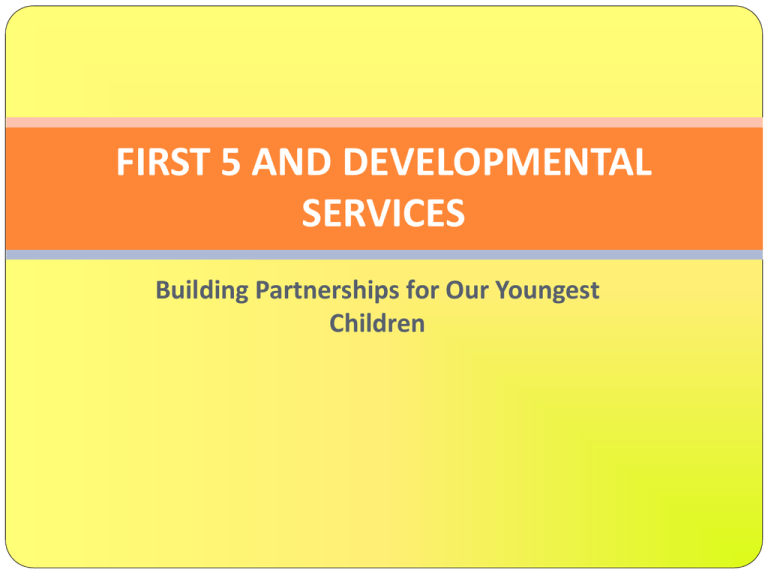
FIRST 5 AND DEVELOPMENTAL SERVICES Building Partnerships for Our Youngest Children GOAL OF DISCUSSION TWO CALIFORNIA SYSTEMS CHARGED WITH MEETING CHILDREN’S NEEDS First 5 Commissions What they look like and how they function Regional Centers What they look like and how they function WHERE DO THEY MEET AND WHAT HAPPENS WHEN THEY DO? BACKGROUND ON FIRST 5 COMMISSIONS County entities Difference between state and county commissions Role of Board of Supervisers Autonomy of commissions Required to address health, early learning, family functioning, systems change 58 learning laboratories Traditional focus on school readiness High need target neighborhoods Family literacy Access to preschool and high quality ECE Full inclusion BACKGROUND, cont. Constraints on First 5 Commissions Non-supplantion provision Can only serve children 0 – 5 and their families County commission funds must serve children in their own counties Unusual structure, compared to other major servicedeliver systems Constraints on Regional Centers Entitlement without commensurate funding Need to manage demand Unusual structure, compared to other major service- deliver systems COUNTY FIRST 5 COMMISSIONS AND CHILDREN WITH SPECIAL NEEDS Most commissions address behavioral and social/emotional issues – what regional centers do not address – through various programs. Commissions are increasingly funding screening in settings such as pediatricians offices and ECE settings. Commissions aim to reduce pressure on regional center system by promoting healthy births. Many commissions are trying to absorb children not eligible for services from regional centers. QUESTIONS ON BACKGROUND, STRUCTURE, OR ACTIVITIES OF FIRST 5? IMPACT OF BUDET CRISIS First 5 commissions’ response State First 5 commission County First 5 commissions Poll #1 The state budget crisis started three years ago. In your experience, are families having a harder time getting services now? NO--I haven't seen any change; YES--harder to get agencies to answer the phone; YES--longer wait times; YES--families are paying more out of pocket now; YES--families aren't qualifying for as many services RECENT BUDGET HISTORY Last year’s interim budget agreement pitted the Regional Center system against First 5 by placing Prop 1D on the May ballot. Prop 1D called for diversion of more than 50% of First 5 funds for 5 years. In the Governor’s proposed 2009-10 budget, the diverted funds were directed toward several programs, but most significantly, the DDS budget. Prop 1D failed passage statewide by a margin of 65% - 35%. RECENT HISTORY, cont. When the Legislature passed the final budget-related bills in July, 2009, the Governor vetoed $50 million for the Early Start Program with this message: “I am reducing Regional Center Purchase of Services by $50,000,000 for services to children up to age five, as these services are due to program growth and thus eligible for funding from the California Children and Families Commission. I am directing the Secretary for the Health and Human Services Agency, the Department of Developmental Services, and the Department of Finance to immediately request funds from the Commission for this purpose. I do not intend to pursue separate legislation changing eligibility or services for these children for purposes of achieving these savings. I urge the Commission to provide supplemental funding for the growth in these services.” CURRENT STATUS Last month, First 5 CA approved contribution of $50 million to DDS for current year. This does not address the previous reduction that resulted in a higher bar to entry into Early Start (Prevention Program) or next year’s need. Poll #2 Since eligibility for Early Start has changed, are families less likely to be referred to Early Start program? YES/NO GOVERNOR’S JANUARY BUDGET PROPOSAL First 5 Account State Dept to which funds are allocated Counties account (account from which funds are transferred to county Children and Families Trust Funds) DDS $ 194.0 Mass Media account DDS $ 6.0 Mass Media account DSS $ 87.0 Education account DSS $ 97.0 Child Care account DSS $ 52.0 R&D account DSS $ 68.0 Admin. account DSS $ 22.0 Unallocated account DSS $ 24.0 $ 550.0 TOTAL Amount CHALLENGE: MEETING ALL CHILDREN’S NEEDS How can we resist pitting some children’s programs against others? Example: CWS advocates response Bringing DD and First 5 advocates together Importance of Early Intervention: Collaborating for Our Children’s Future – Principles of Agreement Principles of Agreement: Regional centers – through the Early Start program and the Lanterman Act – provide critical services to children born with developmental needs and/or experiencing developmental delays, with the goal of linking them to needed services and optimizing their development. First 5 commissions provide critical services to children whose needs are not otherwise met by state-funded/state-mandated services, with the goal of promoting child health, school readiness (including social, emotional, and cognitive development), and improved family functioning. Principles of Agreement: The earliest and most targeted interventions are the most effective. Early screening and assessment are critical to ensure access to the most appropriate services. Families and children frequently have multiple needs and require services from multiple programs or agencies. Principles of Agreement: Regional centers are statutorily responsible for only a segment of the child population that experiences developmental and/or health problems. First 5 commissions are statutorily responsible for identifying and addressing needs of children that are not addressed by other state- or locally-funded programs. Principles of Agreement: No single agency can meet the wide range of child and family needs in California; therefore, it benefits all agencies and the children they serve to collaborate and coordinate so as to maximize available assistance to all children with health, development, social-emotional, and cognitive needs. California’s children are ill-served when programs that meet the needs of different groups are pitted against one another. Is there an upside? Can the struggle to meet children’s early needs lead to any new models of collaboration? What are model approaches? Poll #3 Are there new partnerships in local service delivery systems that are helping to assist families in light of budget cuts? YES/NO Follow-up survey question: What new partnerships in local service delivery systems do you know of that are helping families get access to needed services? QUESTIONS AND DISCUSSION Discussion of local experience and protection of children’s programs. Questions about controversy and/or attacks on First 5? Anything else.....
